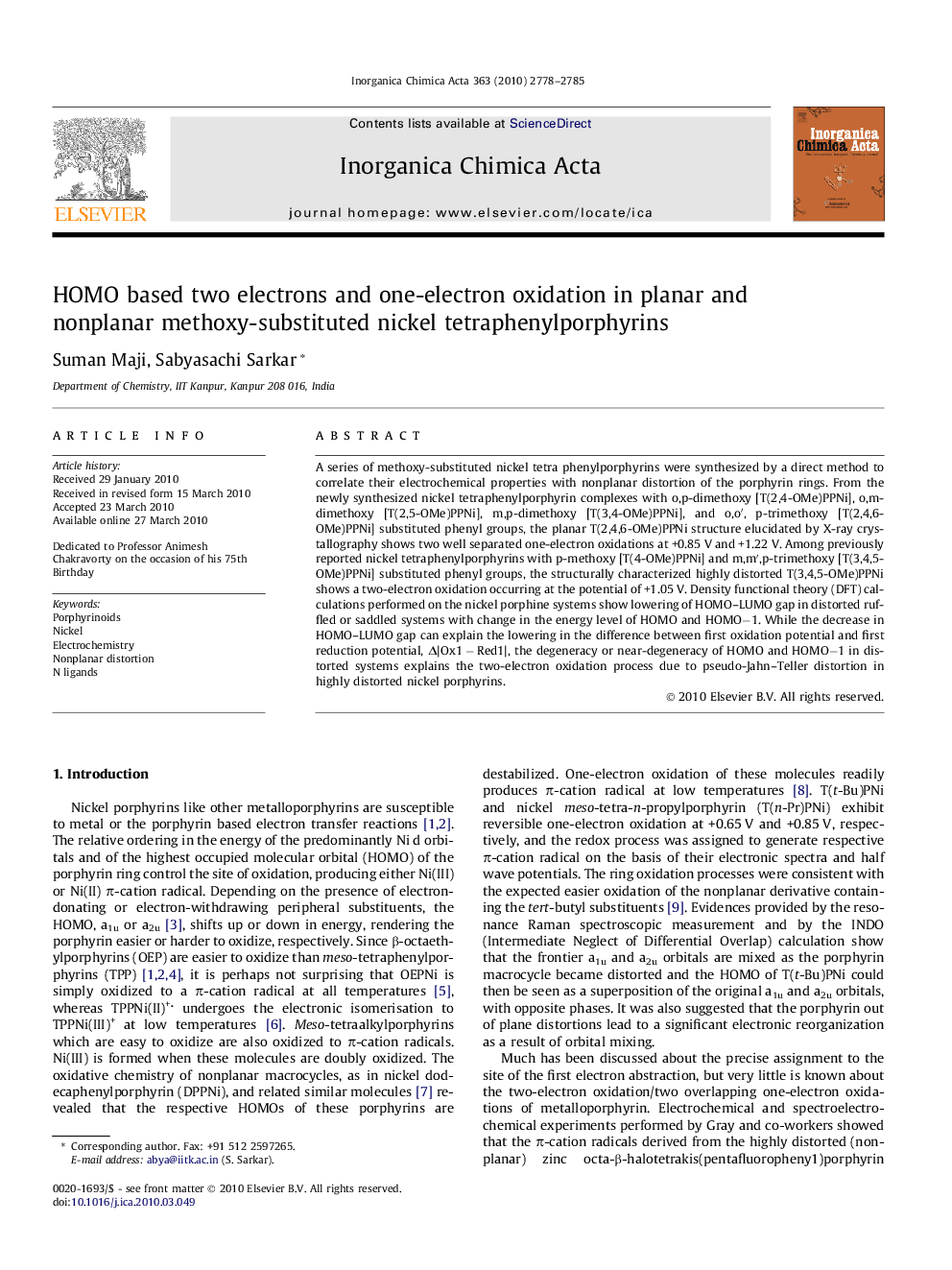| Article ID | Journal | Published Year | Pages | File Type |
|---|---|---|---|---|
| 1306886 | Inorganica Chimica Acta | 2010 | 8 Pages |
A series of methoxy-substituted nickel tetra phenylporphyrins were synthesized by a direct method to correlate their electrochemical properties with nonplanar distortion of the porphyrin rings. From the newly synthesized nickel tetraphenylporphyrin complexes with o,p-dimethoxy [T(2,4-OMe)PPNi], o,m-dimethoxy [T(2,5-OMe)PPNi], m,p-dimethoxy [T(3,4-OMe)PPNi], and o,o′, p-trimethoxy [T(2,4,6-OMe)PPNi] substituted phenyl groups, the planar T(2,4,6-OMe)PPNi structure elucidated by X-ray crystallography shows two well separated one-electron oxidations at +0.85 V and +1.22 V. Among previously reported nickel tetraphenylporphyrins with p-methoxy [T(4-OMe)PPNi] and m,m′,p-trimethoxy [T(3,4,5-OMe)PPNi] substituted phenyl groups, the structurally characterized highly distorted T(3,4,5-OMe)PPNi shows a two-electron oxidation occurring at the potential of +1.05 V. Density functional theory (DFT) calculations performed on the nickel porphine systems show lowering of HOMO–LUMO gap in distorted ruffled or saddled systems with change in the energy level of HOMO and HOMO−1. While the decrease in HOMO–LUMO gap can explain the lowering in the difference between first oxidation potential and first reduction potential, Δ|Ox1 − Red1|, the degeneracy or near-degeneracy of HOMO and HOMO−1 in distorted systems explains the two-electron oxidation process due to pseudo-Jahn–Teller distortion in highly distorted nickel porphyrins.
Graphical abstractTwo one-electron oxidation is observed in planar or nearly planar nickel porphyrins, but in distorted meso-tetrakis(3,4,5-trimethoxyphenyl)porphyrin nickel(II) (avg. trans-Cα–N–N–Cα 142.9°) the HOMO and HOMO−1 are nearly degenerate and due to pseudo-Jahn–Teller distortion, two-electron oxidation is observed.Figure optionsDownload full-size imageDownload as PowerPoint slide
